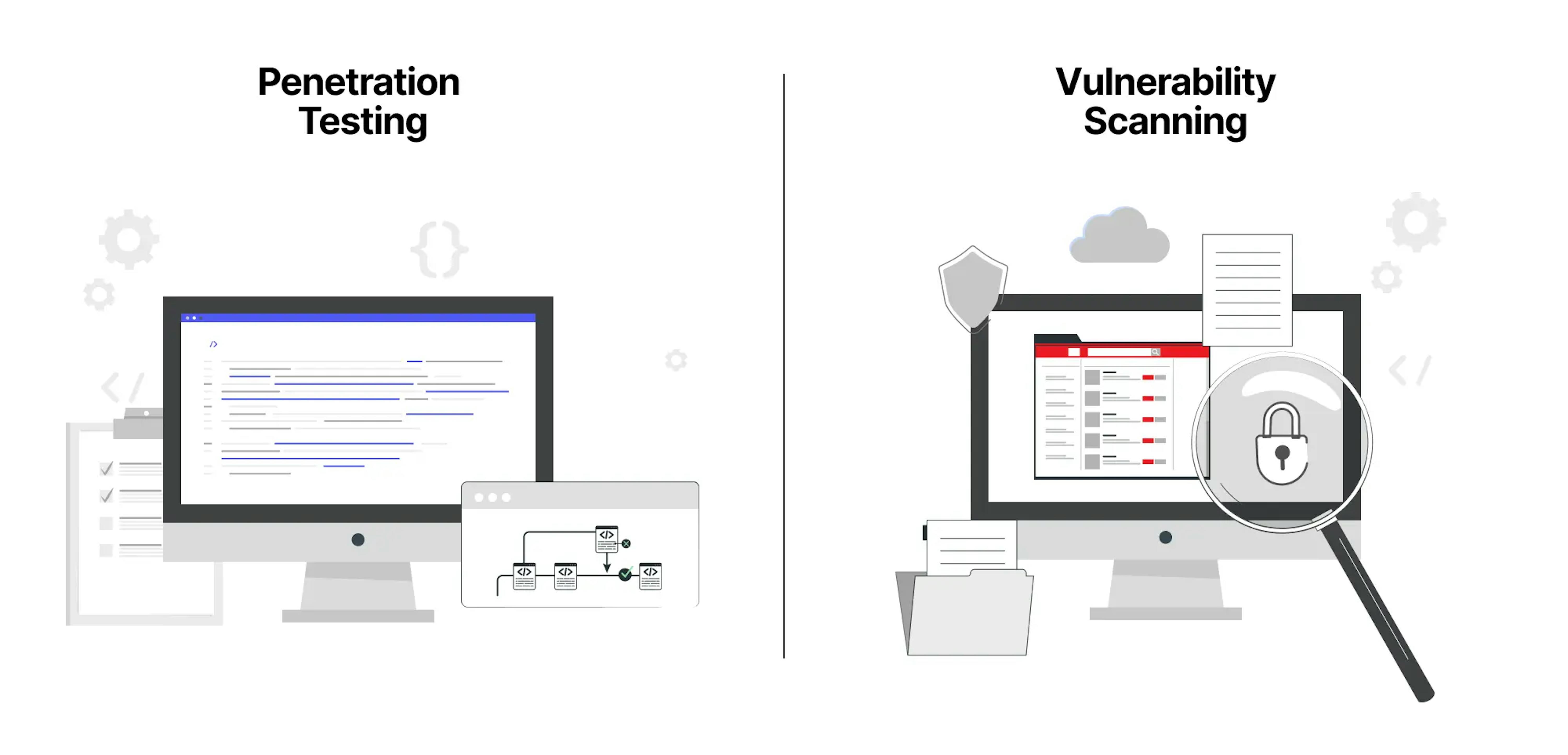Cybercrime has evolved alongside the Internet. Likewise, modern security systems have been learning from past cyber-attacks to provide greater immunity against criminal activity. However, as security systems become more advanced, cybercriminals are adopting more sophisticated and malicious means of attack.
Unfortunately, the detection and subsequent prosecution rate of cybercrimes remains low, only 0.05 percent in the US as of 2020, with actual crime rates showing a 600% increase following the COVID-19 pandemic as more individuals and companies turn to digital services and routines.
You’d be misleading yourself if you think only financial institutions need to worry about cyber threats. Data is the oil of the 21st century, and cybercriminals are no longer interested in stealing only funds since they can make more money from stealing and reselling company data or destroying it if their customer wants to damage a competitor. Having a Quality Assurance department is essential to protect yourself from these threats. They will ensure your systems are protected and working optimally.
Given the various existing terms, choosing the best quality assurance practices can be challenging. It’s important to select the tools and strategies that will best address your needs and potential threats. Two approaches are central to cyber security: vulnerability assessment and penetration testing.
| PENETRATION TESTING | VULNERABILITY ASSESSMENT |
|---|---|
| Ethical hacking to attack and assess a company’s security infrastructure | Identify and address weaknesses in IT infrastructure before attackers exploit them |
| Can be done by in-house team or external contractors | Approaches: Assess networks, applications, and physical security |
| Approaches: Open-box, hacker given information; Closed-box, hacker has no information; Covert, hacker has no information/employees are unaware of impending attack | Involves planning, scanning for weaknesses, prioritizing threats, reporting findings, and continuous maintenance |
Visit our glossary for more detailed information on vulnerability assessment and penetration testing.

Taking security seriously: the benefits of vulnerability assessment and penetration testing
Let’s put ourselves into the shoes of an experienced burglar hoping to break into a nice house. What would you do?
- Study the owners’ routine to know when they’ll be away
- Check for others who have access to their home
- Physically test the windows, doors, and other entrances
- Look for hidden keys
- Try to gain access by pretending to be someone else
This research gives burglars the information they need to exploit a home’s security. A similar approach is used to breach a company’s physical and virtual perimeters. Effective protection comes from thinking like a hacker, which is where vulnerability assessments and penetration tests are useful. If thinking like a criminal doesn’t come easily, your company can hire outside experts to do this for you.
The benefits your business will acquire from vulnerability assessments and/or penetration tests will help you:
- Identify potential security weaknesses before real attackers.
- Save money and time in the long run.
- Optimize and prioritize security measures and responses.
- Build trust with customers and partners by demonstrating a commitment to data privacy and security.
A particular advantage of vulnerability assessments is that they can be automated to reduce the time and resources required to scan your systems.
However, speed comes at a cost and may lead to an incomplete understanding of a system’s security. As a predominantly manual approach, penetration testing is designed to simulate real-world attacks rather than just looking for specific security flaws. In addition, penetration tests can help you assess the real-world effectiveness of your security approaches.
The limitations of vulnerability assessment and penetration testing
Alongside the benefits of these assessment approaches, there are downsides to consider:
- They can be time-consuming and resource-intensive. Comprehensive tests require significant time and effort from security professionals and system administrators, especially when hiring external contractors.
- They only provide a snapshot in time. They can help identify potential and real weaknesses at a specific time but cannot predict future vulnerabilities.
- No guarantee that all vulnerabilities will be found, as new ones can come over time.
- Assessments and tests themselves are not enough to improve security. Organizations must take action to optimize and improve their systems to avoid leaving systems and data at risk of attack.
- Penetration tests can disrupt operations if done during business hours.
Do these disadvantages outweigh the benefits? No. Regular and timely security assessments are essential to building trust and ensuring the proper operation of your products and services. Employing both of these approaches together can mitigate their individual pitfalls.
Which to choose: vulnerability assessments vs pen tests?
It is essential to guarantee that your security systems are up-to-date and protect both the company’s data as well as that of your employees and clients. In short, implementing both vulnerability assessments and penetration tests provides the information you need to protect your website and products from attacks.

The choice of which approach to choose comes down to the time and resources available to the company that wants to test its security. These factors, in turn, are connected with the specifics of a business and the type of data the business handles. For example, financial services must adhere to the Payment Card Industry Data Security Standard or simply PCI DSS. Otherwise, none of your potentially large or even middle business partners may agree to work with your business. This requirement involves penetration testing to meet the standards outlined in the industry.
Likewise, penetration tests may be an unjustifiable expense for a business outside of finances that just appeared on the market. In this case, vulnerability assessments are fast and effective methods for evaluating your security parameters. Will they catch everything? No, which is why once the business grows and obtains more resources, you can look at implementing pen tests.
The more complex a business is in terms of the number of employees, services, and functionalities, the more loopholes there are, and the larger the attack surface. For example, vulnerability assessments will miss risks associated with business logic or price manipulation, which is why penetration tests are the best option in this situation.
As your business grows, make sure you invest in security assessments and plan to diversify your approaches to secure your infrastructure against new threats.
Preparing for an assessment: policies and reports
Regardless of which approach you and your company decide to use initially, having an official policy on when and how you will assess your security infrastructure will provide a plan and benchmark for internal reviews on the process.
An overall assessment policy should include the following sections:
- Scope of evaluation
- Frequency of evaluation
- Methods
If your company intends to use penetration tests, focus special attention on the "Scope" section to specifically outline what the "attackers" can and cannot do. Also, include a section or appendix that accounts for any disruptions the test may cause to your business processes and complaints from employees whose data was compromised during the test. Including this information will preclude any difficulties or complications with the authorities and your employees. This is especially important when using external contractors to conduct the "attack."
Once the assessment is complete, you or the contractors doing the evaluation should provide a written report of their findings. While similar, the reports for vulnerability assessments and pen tests differ slightly:
Vulnerability assessments:
- List of exposed vulnerabilities
- Classification of the risk associated with each vulnerability
- Recommendations for fixing
- Explanation of how vulnerabilities could be exploited
Penetration testing:
- Detailed explanation of methodology used in the test
- List and classification of each exposed vulnerability
- If successful exploitation, explanation of how it was done
Summary
Cybercrime and prevention are locked in an ongoing battle. If you and your business are serious about protecting your data and products from criminals and others who wish you harm, it’s time to take your infrastructure security seriously, especially if you’ve been neglecting it.
Regular vulnerability assessments and penetration tests will secure your business against existing threats and help you and your company develop habits to be resilient to future attacks. This requires a serious approach to security and investment of time and other resources to implement new processes and continuously improve existing processes for quality development and product security.
Mad Devs helps companies create solutions to meet the highest security standards. We achieve this by carefully studying and configuring the product and its infrastructure, improving continuous security monitoring and testing, increasing vulnerability detection accuracy, and improving the entire system's flexibility and stability. You can see more about this in our case study with GuardRails.
To improve your security and build trust with stakeholders, contact us today for a consultation.










